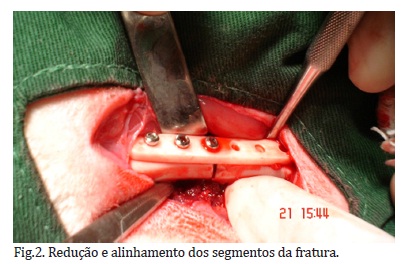Actually, technological advances have contributed to the development and improvement of new materials for implants. Despite the fundamental benefits provided by orthopedic materials, complications resulting from corrosion, degradation, infection, and others may occur. The knowledge of characteristics of the biomaterials is important to predict their behavior in vivo, supporting that the most suitable compound is chosen to reconstruct the bone defect. Metallic plates are the most common material used for repair of long bone fractures, and they are mechanically stable and biocompatible. However, the need of removal and bone weakening are their disadvantages. In this paper, plates made from equine cortical bone were used experimentally in osteotomized rabbit femur (bone-GO Group), in a comparative study with metal plates (metal GM Group). Radiographic evaluation was performed every 30 days during 120 days, at which time was then performed femur histological analysis. During all evaluated moments of the study, there was no statistically significant difference between the two groups in callus morphometry, and complete consolidation was observed in all animals. However, it was observed that the callus was lower in GO compared to GM, all times during the study. Moreover, most of the GO animals showed complete consolidation fracture at 90 days only, whereas this occurred in GM at 60 days. There were no foreign-body cells in the histopathology exam of the GO animals, but larger amount of fibrous tissue was identified, involving this biomaterial. The plate made from horse bone represents a low cost alternative and it is very feasible, it allowed adequate stabilization of femur fracture in rabbits. In this study, the lower periosteal callus associated with a longer time for consolidation in GO suggest greater fracture stability when the bone plate was used.
Orthopedicplate; cortical bone; rabbit









